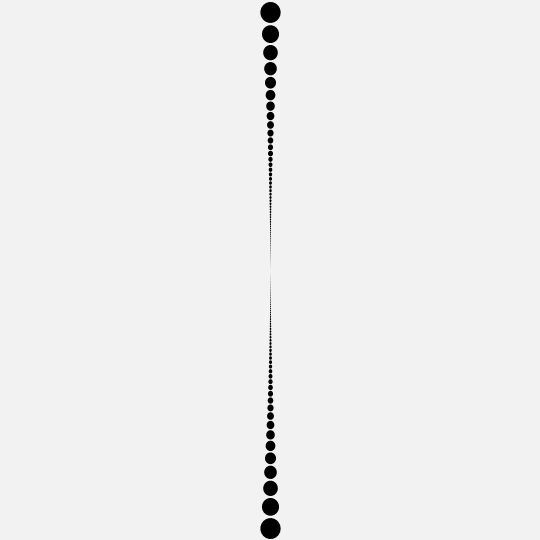
Fall Out
This was a result of various experiments mapping from the sphere to the plane.
In this case, I'm taking a circle of disks on the sphere, then mapping to the plane by the following map: each point on the sphere (except those on the equator) is sent to the point on the $z=1$ plane lying on the same line through the origin (this map arises as a way of identifying [most of] the projective plane with an actual plane). Then, apply the inversion in the unit circle $z \mapsto \frac{z}{|z|^2}$.
The circle on the sphere is the orbit of the point $p = (0,1/2,\sqrt{3}/2)$ under rotations around $(\cos s, 0 \sin s)$. Here $s$ is treated as the time parameter and varies from $0$ to $\pi$.
Here's the code:
inversion[p_] := p/Norm[p]^2;
With[{n = 141, d = .01, p = {0, 1/2, Sqrt[3]/2},
b = NullSpace[{N[{0, 1/2, Sqrt[3]/2}]}],
cols = {Black, GrayLevel[.95]}},
Manipulate[
Graphics[
{PointSize[.01], cols[[1]],
Polygon /@
Table[inversion[#1[[1 ;; 2]]/#1[[3]]]
&[RotationMatrix[t, {Cos[s], 0, Sin[s]}].(Cos[d] p + Sin[d] (Cos[?] b[[1]] + Sin[?] b[[2]]))],
{t, 0., 2 ?, 2 ?/n}, {?, 0., 2 ? - 2 ?/20, 2 ?/20}]},
PlotRange -> 4, ImageSize -> 540, Background -> cols[[-1]]],
{s, 0., ?}]]